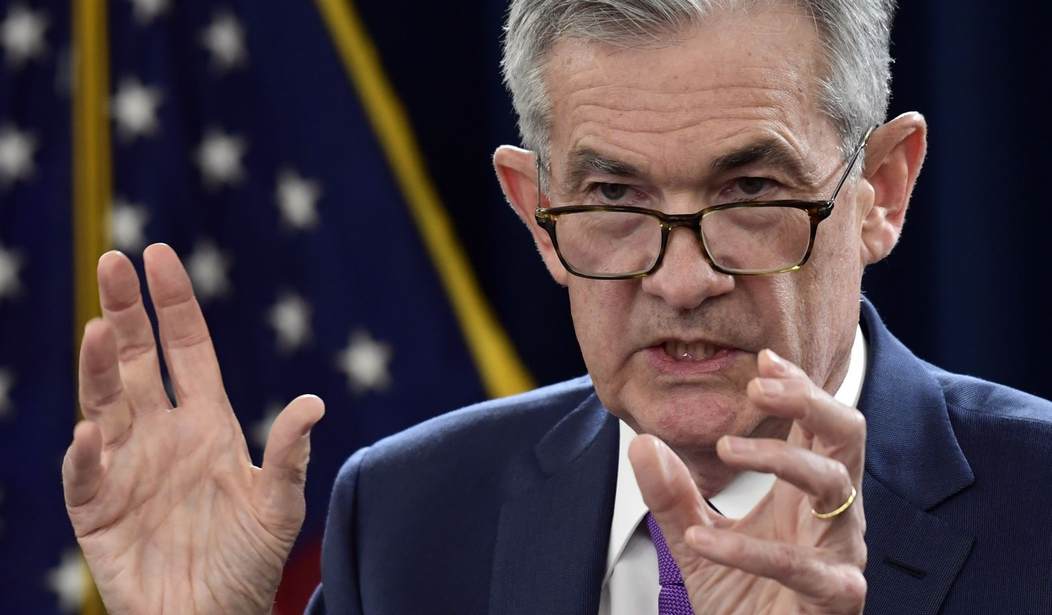Looks like Joe Biden’s “Inflation Reduction Act” left Jerome Powell as underwhelmed as everyone else. Faced with the worst and longest inflationary cycle in decades, the Federal Reserve chair issued an unusually blunt statement this morning. The Fed will continue with its large rate increases until inflation entirely subsides, he pledged, regardless of how “pain”-ful it becomes:
Jerome H. Powell, the chair of the Federal Reserve, warned that the central bank’s campaign to wrestle lower the fastest inflation in decades will come at a cost to workers and overall growth. But he emphasized that the Fed must stick with its policy of raising interest rates to prevent rapid price increases from becoming a more permanent feature of the American economy.
“Restoring price stability will take some time and requires using our tools forcefully to bring demand and supply into better balance,” Mr. Powell said in a speech on Friday. “While higher interest rates, slower growth and softer labor market conditions will bring down inflation, they will also bring some pain to households and businesses.”
He then added: “These are the unfortunate costs of reducing inflation.”
Mr. Powell, who was speaking at the Federal Reserve Bank of Kansas City’s annual conference near Jackson, Wyo., used his most closely watched speech of the year to underline both the Fed’s dedication to bringing inflation back under control and to emphasize that its policy moves so far are not enough to achieve that goal — more will need to be done to beat back rapid price increases.
That’s a big vote of no-confidence in Biden’s new Inflation Reduction Act, and for good reason — it doesn’t reduce inflation at all. Thanks to Biden’s decision to toss $500 billion or more at student-loan forgiveness, it doesn’t reduce the deficit either, but all of that government spending will worsen inflation, and Powell knows it. He has no choice but to use monetary policy to fight inflation since Biden and the Democrats in Congress refuse to fight it with fiscal and tax policies that would either limit consumption or — better yet — spike production.
It also puts lie to the spin coming today from Biden’s supporters about inflation from the Commerce Department’s separate look at personal consumption expenditures (the PCE index) in July. The number dipped a bit from 6.8% in June to 6.3% in July, but that was entirely attributable to a significant drop in gas prices — which have since stabilized:
According to a Commerce Department report Friday that is closely watched by the Federal Reserve, consumer prices rose 6.3% in July from a year earlier after posting an annual increase of 6.8% in June, the biggest jump since 1982. Energy prices made the difference in July: They dropped last month after surging in June.
So-called core inflation, which excludes volatile food and energy prices, rose 4.6% last month from a year earlier after rising 4.8% in June. The drop — along with a reduction in the Labor Department’s consumer price index last month — suggests that inflationary pressures may be easing.
On a monthly basis, consumer prices actually fell 0.1% from June to July; core inflation blipped up 0.1%, the Commerce Department reported.
A number of people argued at this release that inflation was finally bending back in the right direction. Powell clearly doesn’t agree with that assessment, and just as clearly doesn’t see Biden and his administration moving in the right direction either.
And all of this prompts the question: has Powell seen data that makes this unusually blunt statement even more necessary? The combination of a useless “Inflation Reduction Act” and Biden’s bailout of Academia might have been enough for Powell to declare war via interest rates and recession on their own, but I’d bet he’s seen data to suggest that things will either remain as bad or get worse on prices. And that will mean big, big problems for Democrats and Biden when those inflation numbers come out in September and October.
Update: Just FYI, that PCE index report might look relatively like good news, but 6.3% year-on-year inflation in this metric is still near a 40+-year peak. Also, this same report shows that food prices went up month-on-month at a red-hot rate, as did energy prices in general year-on-year. Emphases mine:
From the preceding month, the PCE price index for July decreased 0.1 percent (table 9). Prices for goods decreased 0.4 percent and prices for services increased 0.1 percent. Food prices increased 1.3 percent and energy prices decreased 4.8 percent. Excluding food and energy, the PCE price index increased 0.1 percent. Detailed monthly PCE price indexes can be found on Table 2.3.4U.
From the same month one year ago, the PCE price index for July increased 6.3 percent (table 11). Prices for goods increased 9.5 percent and prices for services increased 4.6 percent. Food prices increased 11.9 percent and energy prices increased 34.4 percent. Excluding food and energy, the PCE price index increased 4.6 percent from one year ago.
How do consumers experience inflation again? Mainly through grocery shopping and at the gas pump, and they’ve only gotten a one-month reprieve at the latter.







Join the conversation as a VIP Member